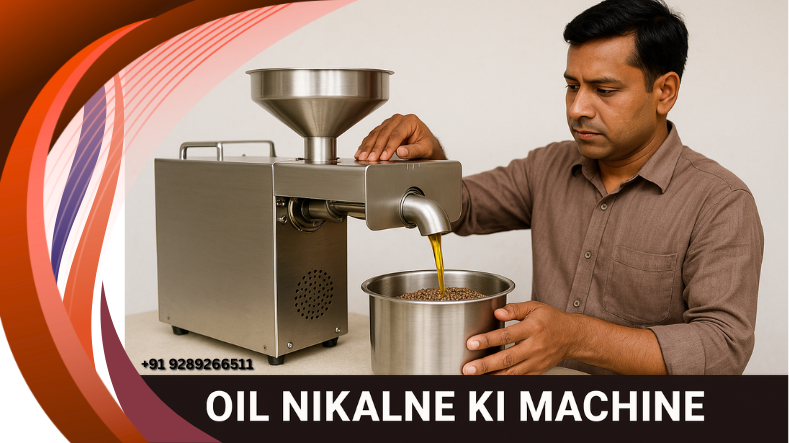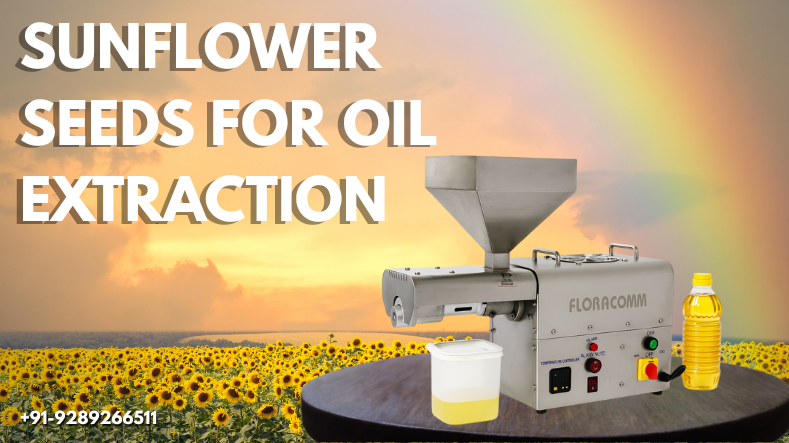Step-by-Step Almond Oil Manufacturing Process: From Kernel to Bottle
Let’s take a step-by-step look at the almond oil manufacturing process, blending traditional know-how with today’s modern extraction technology — the very process Flora Oil Machine helps manufacturers optimize for quality, yield, and purity.....
Almond oil is one of nature’s most precious gifts — rich in nutrients, smooth in texture, and versatile in use. From skincare products to gourmet cooking oils, this golden liquid continues to dominate global markets in 2025. But have you ever wondered how this luxurious oil makes its journey from a simple almond kernel to that beautifully packaged bottle?
Let’s take a step-by-step look at the almond oil manufacturing process, blending traditional know-how with today’s modern extraction technology — the very process Flora Oil Machine helps manufacturers optimize for quality, yield, and purity.
1. Selecting Premium Almonds: The Foundation of Quality
Every great product starts with quality raw material. In almond oil production, that means selecting premium-grade sweet almonds. The nuts are sourced from trusted farms and tested for moisture, purity, and size. This is crucial — because the oil’s taste, color, and nutritional value all depend on the quality of the kernels used.
Before moving ahead, almonds are cleaned and sorted to remove dust, stones, shells, or damaged pieces. A clean input guarantees a smooth process and prevents machinery wear and tear later on.
2. Conditioning and Crushing the Kernels
Once cleaned, almonds undergo conditioning — where moisture and temperature are adjusted to create the ideal extraction environment. This softens the kernels slightly and prepares them for pressing.
The almonds are then crushed or flaked using mechanical rollers or grinders. This step increases surface area, ensuring more oil can be released efficiently in the next stage.
3. Oil Extraction: Cold-Pressed or Solvent-Based
Now comes the heart of the process — oil extraction.
- Cold-Press Method
This is the most natural and preferred technique for producing premium almond oil. The crushed kernels are placed in a screw press or hydraulic press, and oil is extracted through mechanical pressure — without using chemicals or excessive heat. This method preserves the oil’s nutrients, aroma, and light golden color.
Cold-pressed almond oil is often labeled as “virgin” or “unrefined,” ideal for cosmetics, aromatherapy, and gourmet cooking.
- Solvent Extraction (Industrial Scale)
For large-scale operations aiming for higher yield, solvent extraction is used. Here, a food-grade solvent (like hexane) is added to the pressed cake to extract the remaining oil. Later, the solvent is recovered through evaporation and distillation, leaving behind pure almond oil.
Modern plants often use a hybrid system — combining both pressing and solvent extraction for optimal efficiency.
4. Refining the Extracted Oil
Depending on the intended use, the extracted oil may be refined. Refining helps remove unwanted odors, pigments, free fatty acids, and other impurities.
The typical steps include:
* Degumming – removing phospholipids and gums
* Neutralization – reducing free fatty acids
* Bleaching – improving color and clarity
* Deodorization – removing strong natural odors
Refined almond oil is more stable, making it suitable for long-term storage and mass-market products.
5. Filtration, Quality Control, and Packaging
Before bottling, the oil undergoes fine filtration to remove micro particles and moisture. Quality tests are then conducted to check:
* Purity levels
* Acid and peroxide values
* Moisture content
* Color and viscosity
Once approved, the oil is filled into dark glass bottles, aluminum cans, or PET containers that protect it from sunlight and oxidation. Each bottle is batch-coded for traceability, ensuring transparency and quality assurance, something every consumer values in 2025.
The Future of Almond Oil Manufacturing in 2025
As global demand for natural and cold-pressed oils grows, the almond oil industry is adopting smarter, more sustainable practices:
* Energy-efficient extraction lines are reducing power consumption and operating costs.
* Automation and IoT monitoring are ensuring precision in temperature, moisture, and pressure control.
* Waste minimization — even almond meal (the leftover solid) is repurposed for cosmetics, bakery, and animal feed.
* Traceable supply chains with QR codes and digital certifications are now a must-have for premium brands.
At Flora Oil Machine, we design and manufacture cutting-edge oil extraction systems that align with these modern trends—enabling producers to achieve higher yield, consistent quality, and sustainable operations.
Conclusion
The journey of almond oil from kernel to bottle is both an art and a science. Each stage from sourcing the right almonds to refining and packaging—plays a vital role in defining the oil’s final quality.
Whether you’re a new manufacturer exploring small-scale production or a large unit planning an expansion, understanding the almond oil manufacturing process helps you make smarter decisions for equipment, quality control, and efficiency.
At Flora Oil Machine, we help you turn your almond oil vision into a scalable, profitable reality—with machines built for purity, performance, and precision.
Ready to start your almond oil production journey?
Contact Flora Oil Machine today to explore customized oil extraction setups designed for your capacity and quality goals.


